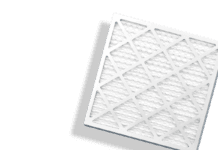Caring for individuals with epilepsy or those prone to seizures presents a unique set of challenges, especially when it comes to monitoring and managing their condition effectively. Fortunately, advancements in technology have given rise to seizure detection devices, a crucial tool in the arsenal of caregivers. These devices offer a new layer of support, enabling better management of epilepsy and providing peace of mind for both patients and caregivers.
Seizure monitoring devices have revolutionized the way caregivers and healthcare providers manage epilepsy. By continuously tracking seizure activity, these devices alert caregivers in real time, enabling swift intervention. This is especially critical during seizures that could lead to serious injuries or require immediate medical attention. Beyond emergency response, epilepsy monitoring devices also collect valuable data that help in understanding the patient’s condition better, paving the way for personalized treatment plans.
Seizure Detection Technology
At the core of seizure detection technology lies the ability to accurately identify and differentiate between normal and abnormal neurological patterns that indicate a seizure. This involves sophisticated algorithms and sensors that monitor various physiological signals, such as electrical activity in the brain, heart rate, and movements. The primary goal is to detect these changes in real time, enabling immediate response to potentially dangerous situations, and thereby enhancing patient safety and care.
Timely recognition of seizure activity is crucial for effective management of epilepsy. The earlier a seizure is detected, the quicker caregivers can respond, potentially mitigating risks associated with prolonged seizures, such as injury or SUDEP (Sudden Unexpected Death in Epilepsy). Seizure detection technology is designed to alert caregivers at the onset of a seizure, ensuring that no critical moment is missed and that appropriate interventions are made as swiftly as possible.
By providing accurate and immediate alerts to caregivers, these devices significantly reduce the risks associated with seizures. For individuals prone to seizures that result in loss of consciousness or physical control, such technology is a lifeline, offering a layer of protection that can prevent serious injuries from falls or other accidents. Moreover, the data collected by these devices can be invaluable in adjusting treatment plans to further safeguard the patient.
Recent years have witnessed significant advancements in the field of seizure detection, transforming the landscape of epilepsy care. These developments have made monitoring devices more intuitive and efficient, providing unparalleled support for both patients and caregivers.
- Integration of Artificial Intelligence (AI): AI has been pivotal in enhancing the accuracy of seizure detection, enabling devices to learn from vast datasets and improve over time.
- Development of Wearable Technology: Wearable devices offer discreet, continuous monitoring, allowing for the detection of seizures without intruding on the daily lives of individuals with epilepsy.
- User-Friendly Interfaces: Modern devices feature interfaces that are easy for both patients and caregivers to use, ensuring that managing epilepsy is as straightforward as possible.
These advancements have not only improved the quality of life for those living with epilepsy but have also provided caregivers with effective, non-intrusive tools to manage the condition. As technology continues to evolve, the future holds promise for even more innovative solutions in seizure detection and epilepsy care.
The Epilepsy Monitoring Unit
An Epilepsy Monitoring Unit is a dedicated facility equipped with advanced diagnostic tools designed for intensive observation and recording of patients’ seizure occurrences. This controlled environment allows medical professionals to capture comprehensive data on seizure activity, including its frequency, duration, and specific characteristics. Such detailed monitoring is essential for accurately diagnosing epilepsy types and understanding the triggers and patterns of seizures in individual patients.
The data gathered in an EMU is invaluable for formulating an accurate epilepsy diagnosis. By analyzing recorded seizures, neurologists can pinpoint the origin of seizure activity within the brain and identify any underlying conditions that may be contributing to the seizures. This precise diagnosis is critical for selecting the most effective treatment strategy, which can range from medication adjustments to surgical interventions, depending on the patient’s specific needs.
The insights gained from monitoring in an EMU can lead to significant adjustments in a patient’s treatment plan. For instance, detailed seizure data can help in fine-tuning medication types and dosages, thereby enhancing treatment efficacy while minimizing side effects. In some cases, the findings may also suggest the suitability of non-pharmacological treatments, such as dietary changes or neurostimulation therapies, offering alternative options for managing epilepsy.
In an Epilepsy Monitoring Unit (EMU), the deployment of specialized devices plays a crucial role in delivering comprehensive care. These technologies work in tandem to monitor and analyze seizure activities, offering insights that are critical for personalized treatment strategies.
- Video-EEG Monitoring Systems: These systems combine video recording with electroencephalogram technology to capture both visual and electrical manifestations of seizures.
- Mobile Monitoring Apps: Applications that allow for real-time data analysis and alert caregivers immediately during a seizure event.
- Remote Monitoring Capabilities: Technologies enabling healthcare professionals to observe and assess patient data from afar, ensuring continuous care.
The integration of these advanced devices within EMUs underscores the commitment to understanding epilepsy more deeply and tailoring care to each patient’s unique needs. By harnessing the power of technology, healthcare providers can offer targeted treatments that significantly improve the quality of life for individuals with epilepsy.
Nighttime Seizure Monitors
Nocturnal seizures pose unique risks due to their occurrence during sleep, often without any witnesses to provide immediate assistance. Nighttime seizure monitors are specifically designed to address this challenge, utilizing advanced sensors and algorithms to detect seizures as they happen. These devices are crucial in alerting caregivers, and ensuring that individuals receive prompt attention, which can be vital in preventing injuries or other complications that can arise from unattended seizures.
The technology behind nighttime seizure monitors is tailored to recognize the specific signs of sleep-related seizures, which can differ significantly from daytime episodes. By monitoring physiological parameters such as heart rate, movement, and even respiratory patterns, these devices can distinguish between normal sleep behaviors and seizure activities, providing accurate alerts when necessary. This targeted monitoring is essential for the effective management of nocturnal epilepsy, offering peace of mind to both patients and caregivers.
The core technology of nighttime seizure monitors includes a combination of motion detection, heart rate monitoring, and sometimes even audio analysis. These components work together to create a comprehensive monitoring system that can detect subtle and overt signs of a seizure. Innovations in smart technology for seizure detection have greatly enhanced the sensitivity and specificity of these devices, reducing the likelihood of false alarms while ensuring that true seizures are promptly detected and addressed.
The deployment of nighttime seizure monitors brings a multitude of benefits for both patients and caregivers. For patients, these devices offer a sense of security, knowing that their condition is being monitored even during sleep. For caregivers, the benefits include reduced anxiety over missing a seizure and the ability to provide immediate care. This technology fosters a safer sleeping environment and supports better overall management of epilepsy, contributing significantly to the quality of life for individuals affected by seizures.
In conclusion, the advent and evolution of the best seizure monitoring devices have marked a significant milestone in the journey towards improved care and management of epilepsy. These technologies, ranging from epilepsy monitoring units to nocturnal seizure monitors and versatile epilepsy devices, provide a safety net that extends beyond the capabilities of traditional care methods. They embody the integration of smart technology for seizure detection into daily life, offering not just peace of mind but also a path toward independence for individuals living with epilepsy.
For caregivers, these advancements represent invaluable tools that alleviate the constant worry associated with managing seizures. The ability to monitor, record, and respond to seizure activity in real-time—whether during the day or at night—enhances the effectiveness of care and supports a proactive approach to epilepsy management.
Looking ahead, the continuous innovation in seizure detection and epilepsy devices promises further improvements in patient care. As these technologies become more sophisticated and accessible, they pave the way for personalized, data-driven treatment plans that can adapt to the changing needs of each individual.









